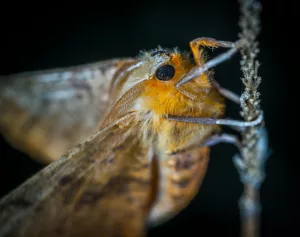One of nature’s most mesmerizing wonders, the Rainbow Eucalyptus tree, boasts a vibrant display of colors on its bark that make it a sight to behold. But what causes this incredible display of hues on the tree’s surface? The rainbow of colors seen on the bark of these unique trees is a result of a fascinating natural process. As the tree sheds its bark, the exposed inner bark undergoes a transformation, revealing brilliant shades of green, red, orange, blue, and purple. This transformation is a visual spectacle that showcases the tree’s unique beauty and charm.
The Science Behind the Colors
The Process of Bark Shedding
The Rainbow Eucalyptus, or Eucalyptus deglupta, is known for its unique bark-shedding process. Unlike many trees that shed bark annually, the Rainbow Eucalyptus peels off its bark in patches at various times throughout the year. This peeling exposes the fresh, green bark beneath, which gradually matures, changing colors in the process. This phenomenon can be compared to a slow, natural painting process where each layer reveals a new hue. The layers of bark are almost like nature’s canvas, with each layer representing a different stage in the life of the tree.
Role of Chlorophyll and Tannins
Chlorophyll, the pigment responsible for the green color in plants, combines with tannins in the tree’s bark to create the stunning array of colors. As the chlorophyll breaks down, other pigments such as carotenoids and anthocyanins become more visible, contributing to the tree’s multicolored appearance. The interaction between these compounds results in a magical display of hues that captivate onlookers. The different pigments present in the bark absorb and reflect light in varying ways, creating a symphony of colors that mesmerizes and intrigues all who gaze upon it.
The Impact of Light Refraction
In addition to pigments, the microscopic structure of the bark can also play a role in how we perceive its colors. The layers of cells can refract light, much like a prism, which can enhance the vibrancy of the colors seen on the bark. This refraction can change slightly depending on the angle of sunlight and the time of day, adding yet another dynamic aspect to the tree’s colorful display.
Environmental Factors
Sunlight and Temperature
Environmental conditions such as sunlight, humidity, and temperature play a crucial role in determining the intensity and vibrancy of the colors on the bark. For instance, trees exposed to more sunlight tend to have more vivid colors due to increased photosynthesis rates, which influence pigment production. Similarly, temperature fluctuations can affect the rate at which chlorophyll breaks down, thereby impacting the hue and saturation of the bark’s colors.
Seasonal Variations
Different seasons bring about changes in environmental conditions that affect the tree’s bark. In the wet season, with ample sunlight and moisture, the tree’s colors may appear more vibrant and saturated. Conversely, during drier months, colors might appear more muted due to stress on the tree. Recognizing these seasonal patterns can provide insights into the optimal times to observe the Rainbow Eucalyptus in all its glory.
Humidity and Rainfall
The Rainbow Eucalyptus thrives in humid, tropical environments. High humidity levels contribute to the tree’s health and its ability to maintain vibrant colors. Consistent rainfall ensures the tree’s growth and the ongoing cycle of bark shedding. In drier conditions, the colors may appear duller, as the lack of moisture can slow down the bark renewal process.
Microclimate Influence
In addition to general climate conditions, microclimates within a given area can also influence the tree’s colorful display. Areas with higher natural humidity, such as near ponds or streams, can support more vivid and frequent bark shedding. Gardeners and landscapers can use this knowledge to strategically plant Rainbow Eucalyptus trees in areas where microclimates enhance their natural beauty.
Symbolism and Significance
Cultural and Artistic Influence
For centuries, the Rainbow Eucalyptus tree has been revered for its striking appearance and has symbolized diversity, transformation, and renewal. Its colorful bark serves as a reminder of the beauty and resilience of nature, captivating all who encounter these majestic trees. In various cultures, artists and poets have drawn inspiration from this remarkable tree, using its vibrant colors as a metaphor for change and diversity in their work.
Artistic Interpretations
Artists across the globe have tried to capture the essence of the Rainbow Eucalyptus in their creations. Whether through painting, sculpture, or photography, this tree has inspired countless works that reflect its dynamic beauty. In particular, the tree’s ability to change colors has been likened to the human experience of growth and change, making it a powerful symbol in artistic circles.
Ecological Importance
Beyond symbolism, the Rainbow Eucalyptus plays a vital role in its ecosystem. As a fast-growing tree, it helps in reforestation projects and provides habitat for various wildlife species. The tree’s rapid growth and ability to thrive in diverse conditions make it an essential component of its native habitats in the Philippines, Indonesia, and Papua New Guinea.
Contribution to Biodiversity
The Rainbow Eucalyptus supports a wide range of flora and fauna, contributing significantly to biodiversity. Its leaves provide food for certain species of insects and birds, while its branches offer shelter. By planting these trees in reforestation efforts, conservationists can help restore ecological balance and promote biodiversity in degraded areas.
Practical Tips for Growing Rainbow Eucalyptus
Choosing the Right Location
If you’re considering planting a Rainbow Eucalyptus tree, location is key. These trees prefer warm, humid climates and can grow rapidly—up to three feet per year—when conditions are favorable. Ensure you have enough space, as they can reach heights of over 200 feet in their natural habitat, though they typically grow shorter in non-native environments.
Strategic Planting
Consider the layout of your property before planting. The Rainbow Eucalyptus can provide ample shade, which is beneficial in hotter regions. However, make sure not to plant too close to structures or power lines, as their rapid growth can become an issue over time.
Soil and Watering Requirements
Rainbow Eucalyptus trees thrive in well-draining, fertile soil. Keep the soil consistently moist but not waterlogged. Regular watering is necessary, especially during dry spells, to maintain the tree’s health and support its rapid growth and color development.
Soil Amendments
To ensure optimal growth, consider enriching your soil with organic matter such as compost. This not only enhances soil fertility but also improves water retention, which is crucial during dry periods. Regularly testing soil pH can also help adjust nutrient levels to suit the tree’s needs.
Pruning and Maintenance
Regular pruning helps manage the tree’s size and encourages healthy growth. Remove any dead or diseased branches to prevent the spread of pests or infections. Pruning also allows more light to penetrate the canopy, which can enhance the tree’s overall appearance and color vibrancy.
Maintenance Schedule
Establishing a routine maintenance schedule can help keep your Rainbow Eucalyptus healthy. A bi-annual check for pests and diseases, along with seasonal pruning, can prevent many common issues. Additionally, monitoring the tree’s growth rate and adjusting care practices accordingly ensures it remains vibrant and healthy.
Common Challenges and Solutions
Pest and Disease Management
Like all plants, Rainbow Eucalyptus trees are susceptible to pests and diseases. Common pests include beetles and caterpillars that feed on the bark and leaves. Implementing regular inspections and using organic pest control methods can help mitigate these issues. Fungal infections can also affect the tree, often due to excessive moisture. Ensuring proper air circulation and avoiding overwatering can prevent these fungal problems.
Integrated Pest Management
Utilize integrated pest management (IPM) techniques to manage pests effectively. This approach combines cultural, mechanical, biological, and chemical tools to minimize environmental impact. For instance, introducing natural predators like ladybugs or using neem oil can help control pest populations without harming beneficial insects.
Adapting to Non-Native Climates
Growing a Rainbow Eucalyptus outside its native tropical habitat can be challenging. In cooler climates, consider planting the tree in a greenhouse or a sheltered area to protect it from low temperatures. Alternatively, you might explore hybrid varieties that are better suited to different environments, though they may not display the same vivid bark colors.
Protective Measures
In regions with colder winters, using frost cloths or creating windbreaks can protect young trees from harsh conditions. Additionally, mulching around the base of the tree can help insulate roots and retain moisture, providing a buffer against temperature extremes.
Case Study: Successful Growth in Non-Tropical Regions
In recent years, gardeners in regions like California and Florida have successfully grown Rainbow Eucalyptus trees. By selecting microclimates within their properties that mimic the tree’s natural environment—such as areas with consistent moisture and partial shade—these growers have managed to cultivate trees with impressive color displays. This highlights the adaptability of the Rainbow Eucalyptus when provided with the right care and conditions.
Lessons Learned and Best Practices
These case studies emphasize the importance of understanding the specific needs of the Rainbow Eucalyptus. Success often hinges on meticulous site selection and ongoing care. By learning from these examples, new growers can avoid common pitfalls and achieve similarly stunning results.
The Broader Impact of Rainbow Eucalyptus Trees
Environmental and Economic Benefits
The Rainbow Eucalyptus is not just a visual delight but also provides substantial environmental and economic benefits. Its fast growth makes it an excellent choice for carbon sequestration projects, helping to combat climate change by absorbing CO2 from the atmosphere. Moreover, the wood from these trees is used in various industries, from paper production to furniture making, contributing to local economies.
Sustainable Harvesting Practices
To ensure that the economic benefits do not come at the expense of environmental health, sustainable harvesting practices are essential. This includes selective logging, replanting efforts, and ensuring that wood production does not degrade the surrounding ecosystem. By balancing economic interests with ecological responsibility, we can preserve the Rainbow Eucalyptus for future generations.
Educational and Ecotourism Opportunities
The Rainbow Eucalyptus also presents unique educational and ecotourism opportunities. Many botanical gardens and arboretums feature these trees as part of their collections, educating visitors about their biology, ecology, and cultural significance. Guided tours and educational programs can further enhance public awareness and appreciation for these remarkable trees.
Community Engagement
Engaging local communities in conservation and educational efforts can foster a deeper connection to the Rainbow Eucalyptus. Community planting days, workshops, and collaboration with schools can inspire future generations to value and protect these trees. By involving people in hands-on experiences, we can cultivate a sense of stewardship and commitment to preserving nature’s wonders.
In essence, the Rainbow Eucalyptus tree is more than just a botanical curiosity; it is a testament to the incredible diversity and adaptability found in nature. Its vibrant colors, resulting from complex biological processes and environmental interactions, remind us of the intricate beauty that surrounds us. Whether you’re an avid gardener looking to introduce a splash of color to your landscape or a nature enthusiast marveling at the wonders of the world, the Rainbow Eucalyptus offers inspiration and awe in equal measure. By understanding and respecting the needs of this remarkable tree, we can continue to enjoy its stunning presence for generations to come.



